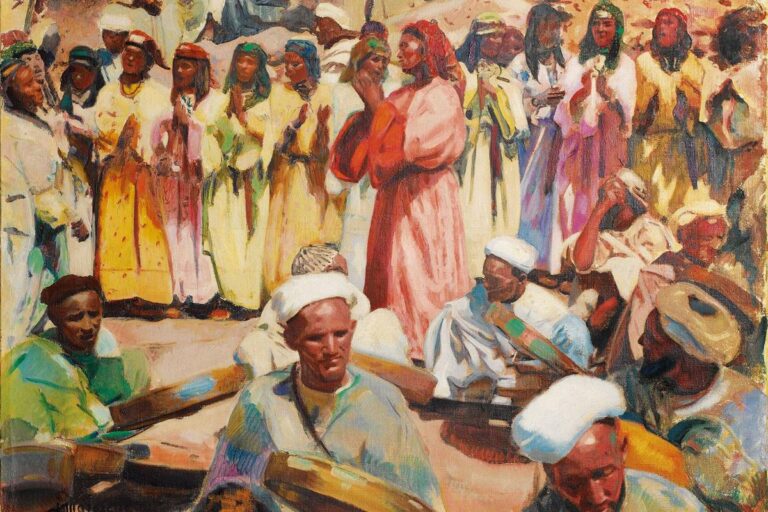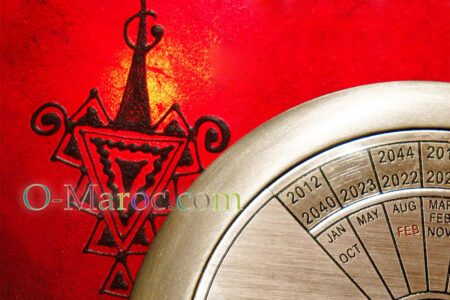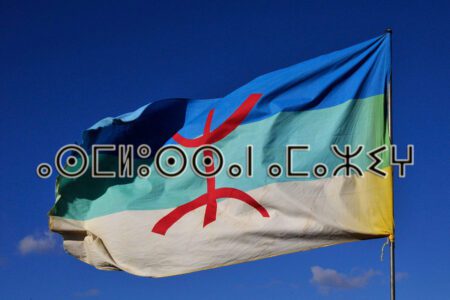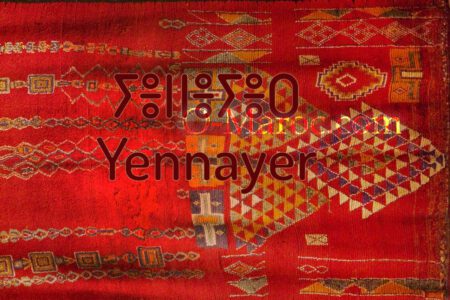We’ve been asked to put on a bellydance show at Mezgarne several times now, and most of the time our clients are bellydancers who would like to see an authentic Moroccan show.
And every time, our answer is the same: oriental dance is not authentic to Morocco, at least not in the South. It’s an imported spectacle, offered only at the request of tourists, Europeans and even more so Middle Easterners (Saudis, Emiratis…).
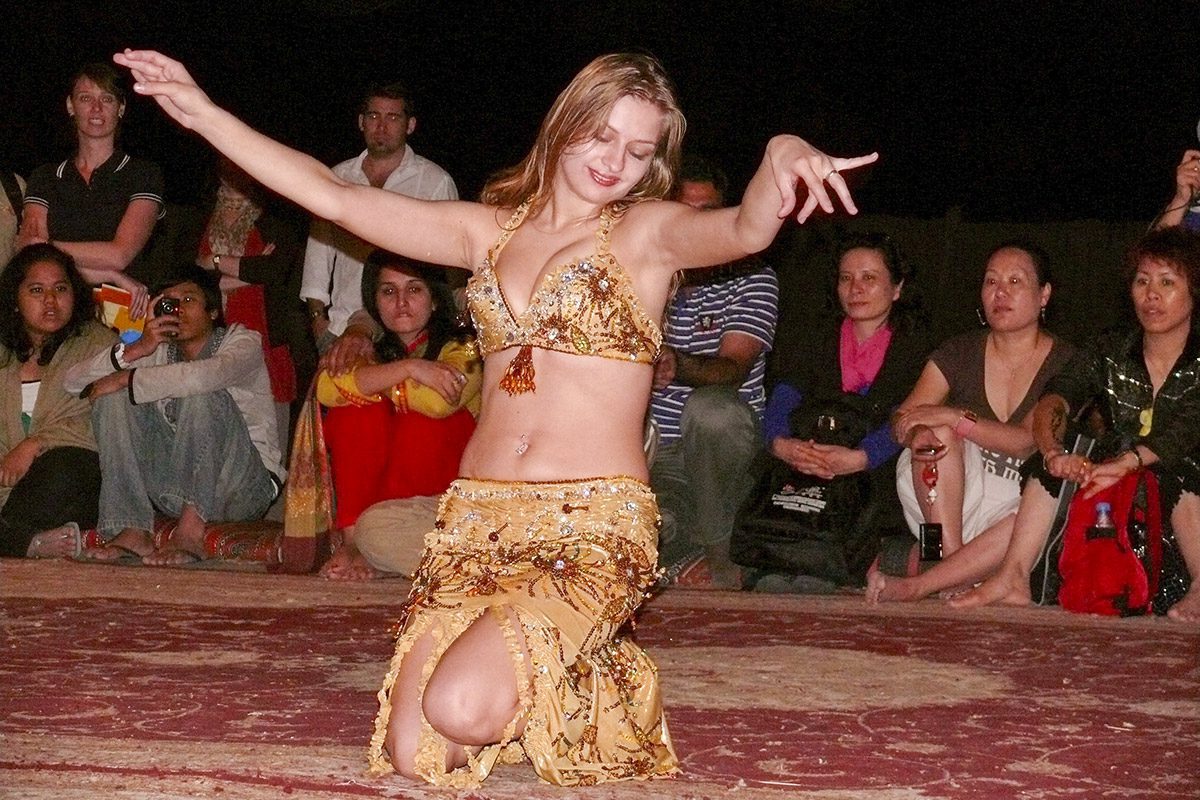
Oriental dance, as its name suggests, is Oriental.
And Morocco, which in Arabic is called Al Magrhib, meaning “farthest to the sunset”, is not Oriental, but Western.
The belly dance is called “Raqs al sharqi” in Arabic, which means “the dance of the East“. This form of dance was practised more in the Middle East, Lebanon and Turkey.
In the Maghreb, it was mainly practised in Egypt, before gradually spreading, first under Turkish occupation (but the Ottoman empire never went as far as Morocco), and then thanks to Egyptian cinema.
The very name given to Oriental dancers in Egyptian “ghaziya” proves this foreign origin. The Ghawazi are the nomadic gypsies, known in Turkish as cingene. They also gave their name to these dancers, “cengi” in Turkish. What’s more, in Egyptian, the ghawazi is quite simply the foreigner, the one who is kept outside the city, outside society, so as not to be invaded.
This particular form of dance, with its transparent veils, sequins and short, tight-fitting tops revealing the stomach and, above all, the naked navel, stopped before Morocco, and only entered the country with performances that were anything but authentic.

There are traditional dances somehow similar to oriental dance in Morocco
And quoting a forum participant who summed it all up:
It’s different in that the percussion in the rhythm is more accentuated, so of course you also have to accentuate the movement of the buttocks. There are certain gestures you can make, for example the left-right head movement and the hand movement, the left-right shoulder movement.
There are some similarities with belly dance, but you mustn’t confuse the styles.
Traditional Berber dances share certain types of movement with Oriental dance, such as the interplay of the hips, moving the upper and lower parts of the body independently, the “figure eight” movement of the hips, but the analogy ends there.
In traditional Berber, Chleuh and Amazigh dances, the woman is fully dressed, wearing no particularly long veil (and generally not even a veil, just a headdress).
The dance movement is emphasised under the buttocks, with a scarf or garland tied below the hips for dancing.
And above all – hence its modesty – the dance is mostly performed in groups. Ahidous and ahwach are dances in which men and women dance together, or face to face. There is no ‘one woman’ seducing an audience of men, but a collective ritual, a game of one group against another.
The music, too, is totally different, a far cry from the languorous tones of Arabo-Andalusian music. Berber rhythms are much more haunting and repetitive, and the music is not a melody but a rhythm that supports a capella singing. Berber dances are sung, and the lyrics add a great deal to the show.
Guedra, in the south
Although very different, the guedra ( الكدرة ) is probably the closest thing to oriental dance in its sensuality: a singer-dancer, seated, in the middle of a circle, under the tent, with her upper body dancing.
Little by little, she may even partially undress. But only in the privacy of the tent.
There are sheikha and sheikha
Sheikhate are Moroccan singers and dancers who perform at weddings, festivals and private parties, singing and dancing. Unlike the ahidous or other traditional dances, they are performed by women only, with the presence of men limited to the accompanying orchestra.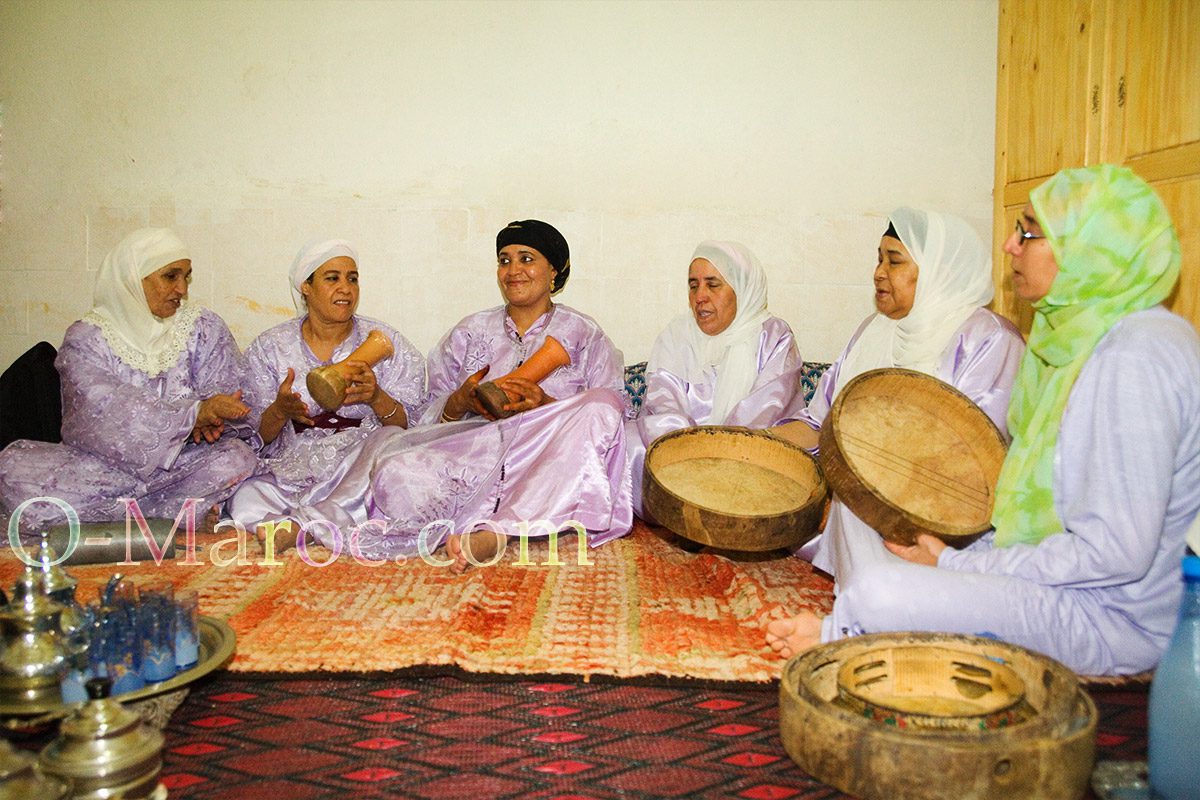
They have a sulphurous reputation in Morocco, because they are free women, who appear on stage, who mix with men, so they can only be prostitutes. In reality, some of them certainly are, but not all. The sheikha is an area where Moroccan schizophrenia reigns supreme, with spectators who adore these women but would not want them in the family…
In any case, apart from very private ceremonies, the sheikhate dance dressed from head to toe, not veiled but often with an Amazigh hairstyle, and with no movements other than those seen during the ahidous.
Sheikhate are singers, and also dancers. In this case, their dance is Moroccan, not Oriental.
Dance in Mezgarne
In Mezgarne, we can offer you what is really from the region:
- a group of gnaouas natives of Tazzarine, whose drums have not yet encountered the “world” and “fusion” rhythms now played in Essaouira ,
- a mixed group that will play an ahidous, six men and six women, and you can join in the dance line,
- Berber singers, with guitar or flute.
To find out more
Some links, books and videos to see the real traditional dance of southern Morocco. (In French, I’d be happy to add English speaking references)
- A French-language portal on Oriental dance, with a space for “other dances”: Irida
- A musician, Hossam Ramzy
Books:
- Danses du Maghreb by Viviane Lièvre, with the collaboration of Jean-Yves Loude: the main dances of Algeria, Morocco and Tunisia and the instruments that accompany them. The place of dance in North African culture and North African dance in France.
- Chants et danses de l’Atlas (with CD) cheikates by Myriam Rovsing-Olsen: an art that combines song with poetry and dance, and is part of the agricultural cycle and the very existence of the mountain Berbers.
 A typo or syntax error? You can select the text and hit Ctrl+Enter to send us a message. Thank you! If this post interested you, maybe you can also leave a comment. We'd love to exchange with you !
A typo or syntax error? You can select the text and hit Ctrl+Enter to send us a message. Thank you! If this post interested you, maybe you can also leave a comment. We'd love to exchange with you !

